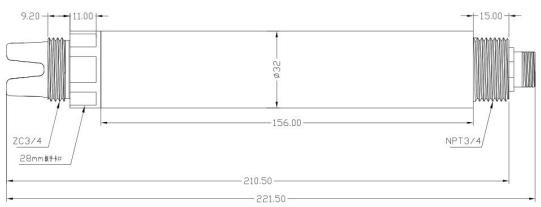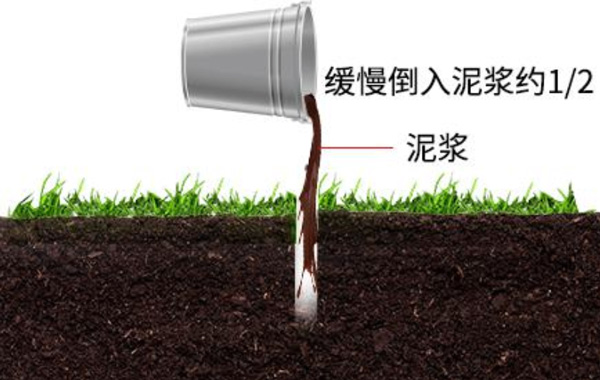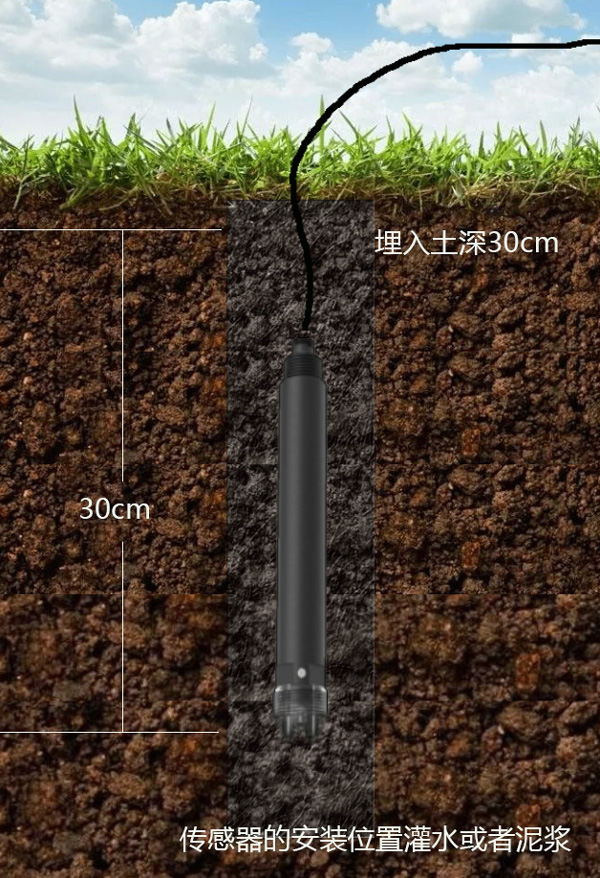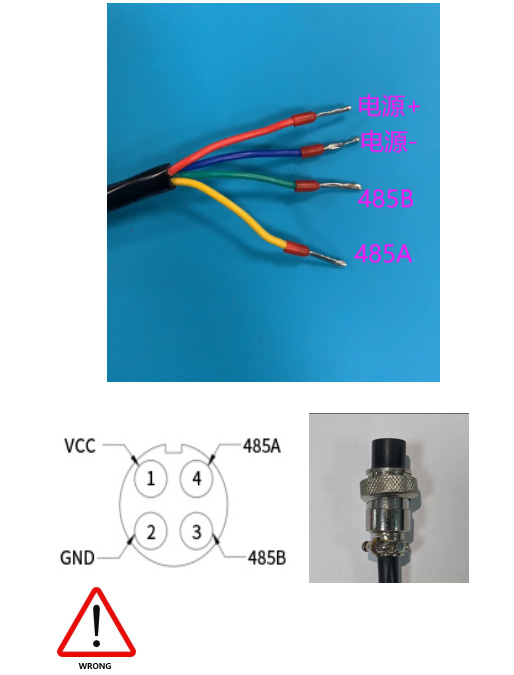Tianqiong Sensor IOT Technology Co., Ltd
Sales Manager:Ms. Emily Wang
Cel,Whatsapp,Wechat:+86 15898932201
Email:info@fengtutec.com
Add:No. 155 Optoelectronic Industry Accelerator, Gaoxin District, Weifang, Shandong, China

Sales Manager:Ms. Emily Wang
Cel,Whatsapp,Wechat:+86 15898932201
Email:info@fengtutec.com
Add:No. 155 Optoelectronic Industry Accelerator, Gaoxin District, Weifang, Shandong, China

Model:TP485
Brand:tianqiong
one.Soil PH Meter Application Environment Description
Soil PH Meter is designed to perform direct pH measurements in soil for environmental and agricultural testing to better understand the condition of your plants.Soil PH Meter is a soil PH transmitter developed by our company.The transmitter has high accuracy, fast response, stable output, and is suitable for various soil quality.It can be buried in the soil for a long time, resistant to long-term electrolysis, corrosion resistance, vacuum potting, and completely waterproof.
It can be widely used in the detection of soil pH, fine agriculture, forestry, geological exploration, plant cultivation, water conservancy, environmental protection and other fields.
Can be buried in the soil for long-term dynamic testing.
Stable performance and long service life
IP68 waterproof standard
two.Soil PH Meter Technical Performance and Specifications
1.Technical parameters
| Measurement principle | Electrochemistry (salt bridge) |
| Signal method | RS485 (MODBUS-RTU) |
| Measurement range | 0~14.00 (PH) |
| Measure resolution | 0.01 |
| Measurement accuracy | ±0.1PH, ±0.1℃ |
| Response time | About 10s (98% flowing liquid) About 15s (98% static liquid) |
| Housing material | ABS |
| Temperature compensation | Automatic temperature compensation |
| Cable length | Standard 5 meters |
| Power supply voltage | 12-24VDC (0.4W@12V) |
| Measurement environment | Temperature 0~50℃ (no freezing), <0.2MPa |
| Waterproof grade | IP68 |
| Installation method | Immersive installation, soft soil slurry |
2.Soil PH Meter Size Diagram

The sensor connector is M12 aviation plug connector 5-core mother seat
three.Soil PH Meter Installation
Installation method
Step 1: Use a soil drill to drill holes in the right place
1.Put the 20mm diameter drill vertically on the ground, hold the handle tightly with both hands and press down clockwise and rotate slowly.(Note: Don't use too much force, be sure to turn slowly and a few more turns to prevent the drill bit from running off the hole and breaking into a crooked hole)
2.Take out the soil drill from the hole and put it into the bucket to collect the soil from the soil drill into the bucket with the following steps and mud.
3.Repeat the above-mentioned holes and soil extraction, and try to put the sensor into the hole in the process (do not forcefully touch the bottoming of the equipment) to test whether the depth of the hole is suitable; if there is lag, use a soil drill to correct it to ensure that the sensor is placed and removed smoothly; until the hole depth is flush with the installation position marked by the sensor, the hole is completed

Step 2: Making mud
1.Pick out impurities in the soil, gravels, grass roots, soil blocks that are not easy to dissolve, etc.Rub the soil finely to make it smooth.2.Pour in appropriate amount of water and stir thoroughly until it is viscous; the loam mud should not be thicker than "seed sauce"; and the mud should be finished.

Step 3: Grouting Installation
1.Pour the mud slowly into the hole, about 1/2 of the hole; it can be increased or decreased according to the actual situation.
2.Slowly place the sensor into the hole, rotate slowly in one direction and press down.The speed is too fast, which may cause the bubbles to not be completely discharged.(Note: Do not pull up the sensor during the re-rotating and pressing process to prevent gas from being sucked into the hole again)
3.When the sensor is installed to the correct depth (the zero scale is flush with the ground), some mud will overflow around the equipment and the grouting will be completed.(Note: Remove excess mud outside 3CM around the sensor to prevent agglomeration from affecting moisture infiltration)

Step 4: Installation is completed
Connect the device to the power cord and the 485 communication cable to power on for 1 hour before data collection can be collected.
1.Key points for sand and soil installation
The installation of sand and soil is no different from the standard installation steps of loam.It should be noted that sufficient water is required.Before grouting, pour the water into the hole and wet the entire hole wall until there is excess water at the bottom of the hole.Then follow the steps and slowly pour the mud into the hole, about 1/2 of the hole.The other installation steps are as follows: loam installation.
2.Key points for clay installation
After the installation of clay is completed after the holes are drilled and collected, after cleaning impurities, soak the clay in water for more than 2 hours to soften the clay and facilitate the survival of a relatively uniform mud.After soaking, stir to a viscous shape and grout.The other installation steps are as follows: loam installation.

2.Electrical installation
The cable is a 4-core shielded wire, line sequence definition: red-power cord (12~24VDC)
Blue-ground (GND)
Green-485B Yellow-485A
Before powering on, carefully check the wiring sequence to avoid unnecessary losses caused by wiring errors.Note: The color of the cable may vary slightly depending on the production batch.The specific color of the cable is subject to the silk screen printing.

Incorrect wiring may cause permanent damage to the device
Four.Soil PH Meter Maintenance and Maintenance
1.Use and maintain
When used for the first time or not after a long time, the sensitive bulb and reference fluid should be immersed in 3.3 mol/L KCI solution for more than 2 hours.
When using, wash and wipe dry with deionized water (or distilled water) to prevent impurities from being brought into the liquid to be tested.1/3 of the sensor should be inserted into the liquid to be tested.
The terminal part should be kept clean and dry.When the sensor is not in use, it should be cleaned.Insert the protective cover with 3.3mol/L KCI solution, or insert the sensor into a container with 3.3mol/L KCI solution.
Check whether the terminals are dry.If there are any stains, wipe them with anhydrous alcohol and continue to use them after drying.The sensor should avoid long-term soaking in deionized water, protein solutions, strong acid and alkali solutions, and acid fluoride solutions, and prevent contact with silicone grease.The sensor that has been used for a long time may become translucent or contain deposits.At this time, it can be washed with dilute hydrochloric acid and rinsed with water.
When the sensor has a long service life, it can be calibrated and corrected by matching the instrument.When the sensor is maintained and maintained by the above method, it means that the sensor has failed.Please replace the sensor.
In the photovoltaic field, "black heart" is a serious quality issue, manifested as the luminous intensity of some areas inside the photovoltaic module being significantly lower than the normal level, presenting black or dark areas. This indicates that the performance of the battery cells i...
In the context of the increasingly accelerating urbanization process today, air quality has become one of the key elements for measuring the quality of life. However, due to the high construction and operation costs and fixed layout, traditional large-scale environmental monitoring stations find it...
Water is the lifeblood of plant growth, permeating throughout their entire life cycle. Plants mainly rely on their roots to absorb water, and this water participates in numerous physiological activities within the plant.Photosynthesis is the core process of plant growth. Water and carbon dioxide und...
Under harsh low - temperature and freezing conditions, anemometers and wind vanes are highly prone to malfunction. As a result, the errors in the collected data increase significantly. Although these devices are equipped with heating units, the units only function on the rotating parts. Once severel...